September 2, 2024
Voting Leave in the USA – Which States Require Paid Voting Leave?
Election day, and the lead-up to election day, can be a stressful time in the workplace. For team leaders or ...
The Bradford Factor is a tool that attempts to give a measurable figure on the impact of employee absences in a business.
There have been huge amounts of resources dedicated to trying to understand the cost of absenteeism, and these studies generally produce figures that are scary, but don’t offer many actionable insights for your business.
Is the Bradford Factor a good solution to this problem? How does it work? And how are Bradford Factor scores calculated? Read on and find out.
The Bradford Factor is an HR metric that shows the overall impact of an employee’s absences, suggesting that smaller, more frequent absences are more disruptive than fewer, yet longer absences.
Also known as the Bradford Score, Bradford Index or Bradford Formula, it’s believed to have originated from the UK’s Bradford University School of Management in the 1980s.
Bradford Factor scores are used as an attendance-based KPI in many businesses, although there are many that feel it is not an accurate or fair measure of absenteeism.
You can calculate Bradford Factor scores by taking the number of separate absences over a 52-week period, raising it to the power of two, and multiplying the result by the total number of days absent over that period.
The formula is very simple:
A2 x D = B
Let’s look at a few examples to make it clearer.
Tom has three separate times when he was absent from work. He had a cold that lasted for three days, a flu that lasted four days, and a stomach bug that kept him off work for just one day.
He had a total of eight days off work over three instances. We use the Bradford Formula to calculate his score:
32 (aka 3 x 3) = 9
9 x 8 = 72
His Bradford score is 72.
Mary was only absent from work one time, but that one time was a very nasty bout of COVID. She was off work for 12 days, with no other absences the whole year.
12 = 1
1 x 12 = 12
Her Bradford score is 12.
Steve called sick with a number of small illnesses over the course of the year. In total, he was off seven different times, but each time he was only off for one day.
72 = 49
49 x 7 = 343
His Bradford score is 343.
As you can see, the Bradford Factor posits that there’s a much bigger impact from multiple short-term absences than a lower number of absences lasting a longer total duration.
From our examples, Mary had the most total days off, but her Bradford score is the lowest, since she only had one period where she was absent.
Steve had the fewest days off, yet due to each being separate absence instances, his Bradford score was by far the highest.
The idea is that each time someone calls in sick or is, for whatever reason, unable to make it to work, there is more work required to make up for them and a bigger loss of productivity, yet if the person was already absent the days prior, the rest of the team is in a better position to compensate for their absence.
Further Reading: How to Do Absence Management Right in Your Business
A “normal” or “average” Bradford score is generally considered to be around 50.
Lower is better with Bradford scores; generally a Bradford score of 50 or less is considered to be no cause for concern.
Many organizations consider a Bradford score of more than 50 to require further monitoring.
A “bad” score is when it gets above 100, although each team will have their own threshold for when a person’s score necessitates further action.
The Bradford Factor takes into account all unscheduled or unplanned absences.
This includes sickness absences, mental health days, personal days and no-shows.
It doesn’t include scheduled annual leave, parental leave, or any other absences where advance notice is given.
The Bradford Factor is most often used as a key performance indicator (KPI) for attendance.
Employees’ score will be calculated and the business may decide to take specific actions when the employee reaches certain “trigger points”.
Trigger points are tiers or thresholds where an employee’s Bradford Factor score warrants further actions.
A common trigger point setup could look like this:
This table gives you a way to quickly and easily calculate Bradford Factor scores, and is color-coded to fit many organizations’ trigger points.
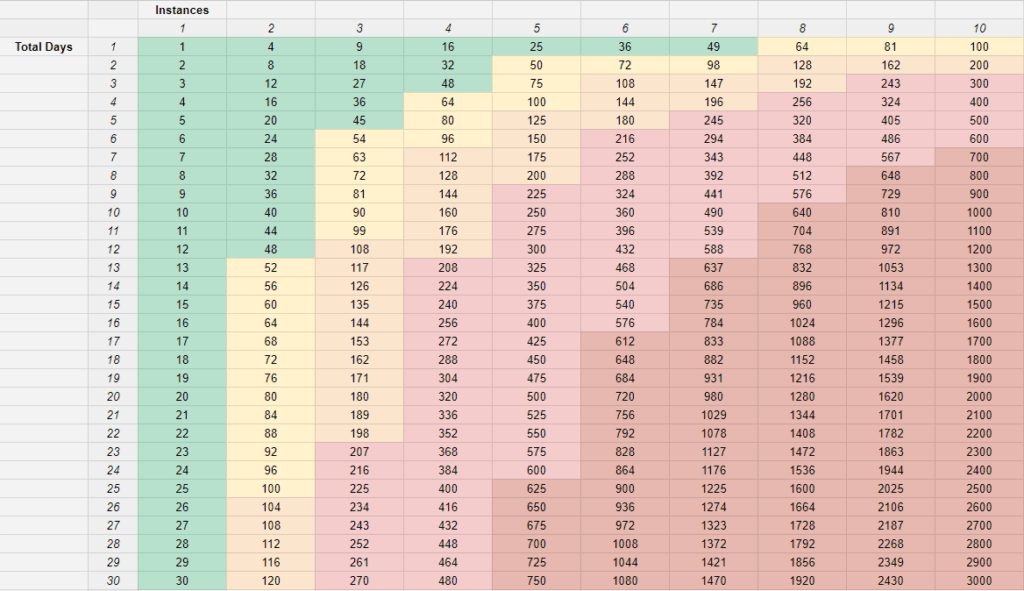
Keep in mind that these tiers are not standard rules, and can be adapted to what your organization feels is fair or useful.
Further Reading: Creating an Absence Policy For Your Business
While the Bradford Factor gives a convenient, easy-to-calculate KPI to judge attendance and identify absence patterns, it’s significantly lacking in a number of areas.
Let’s examine a few drawbacks.
First, it doesn’t take context into account at all.
The Bradford Factor treats all absences the same. One employee could be off work because a family member died, another off work because their car wouldn’t start, and another off work without a valid reason, and these would all be lumped in as the same thing.
It’s a cold, inhuman metric. While some business leaders would see this as a positive (as it doesn’t make a difference to the business why someone is absent), it’s not good if you’re looking to build a people-focused team.
Another con is that it assumes the idea that each individual absence should be weighed significantly more than the overall days missed.
While there is logic behind this, there isn’t any hard evidence, which would be nice if you’re using the Bradford Index to discipline, or even terminate, employees.
A lot of people criticize not so much the Bradford Factor itself, but the commonly used set of trigger points we outlined above.
Most sources put the threshold for “normal” or “acceptable” at 50, and say that a higher Bradford Factor score is cause for further action. Bradford detractors say this is unrealistic.
Using this threshold, if someone was off work four times throughout the year, missing one day each time, they’d have a Bradford score of 64, which would be cause for concern.
In another example, someone could be off work five times over the same period – four times being one-day illnesses, another being a bad flu lasting a week (five working days).
Their Bradford Factor score would add up to 225, which in some scales would be grounds for a written warning – a nasty present for the person to come back to after getting over their illness, and one a lot of people would argue is not at all fair.
Using the Bradford Factor as basis for warnings, disciplinary action or termination, without taking other context into account, means you’re treating sickness as a disciplinary offense – which it shouldn’t be.
It’s understandable to strive for low absence rates and more productive hours from each employee, but it’s also a fact of life that people get sick, injured, have medical conditions or have personal circumstances that affect their availability from time to time.
Workers shouldn’t be going through life worried that catching a flu or a stomach bug could cost them their job.
It’s also a misguided approach to assume that attendance perfectly correlates with productivity.
Often, people who take more time off are actually more productive, because they have more time off to rest and recharge, and are more focused and engaged when they are at work.
This is especially true if people are turning up to work when they’re less than 100% because they’re scared of taking a hit to their Bradford Factor score.
If someone’s under the weather and comes to work anyway, they probably won’t perform at peak productivity.
Their illness may then hang around for a longer time, because they weren’t able to rest and recover properly. That means multiple days of lower-than-average productivity.
Worse still, it may spread to other employees, causing a wider-spread dip in productivity.
It’s a cycle that could be prevented by just encouraging people to take a sick day when needed.
Learn More: many teams and employees fall into the “Presenteeism” trap. Learn more here about what presenteeism is, how it affects your business, and how to prevent it becoming a problem.
Flamingo doesn’t include the Bradford Factor as a built-in metric, mostly for the reasons discussed above.
We feel there are significant flaws to using this as a KPI for employees, especially if you’re using Bradford scores in isolation, without considering the context behind peoples’ absences.
However, if you want to calculate your team members’ Bradford scores, it’s easy enough to do.
Go to the Users tab and download a report (you can do this for your whole organization or an individual team).
Choose your desired time frame, and under “Report format”, make sure you select Itemized.

This will give you a spreadsheet of all leave requests. From here, filter it so that you only have “Approved” requests:
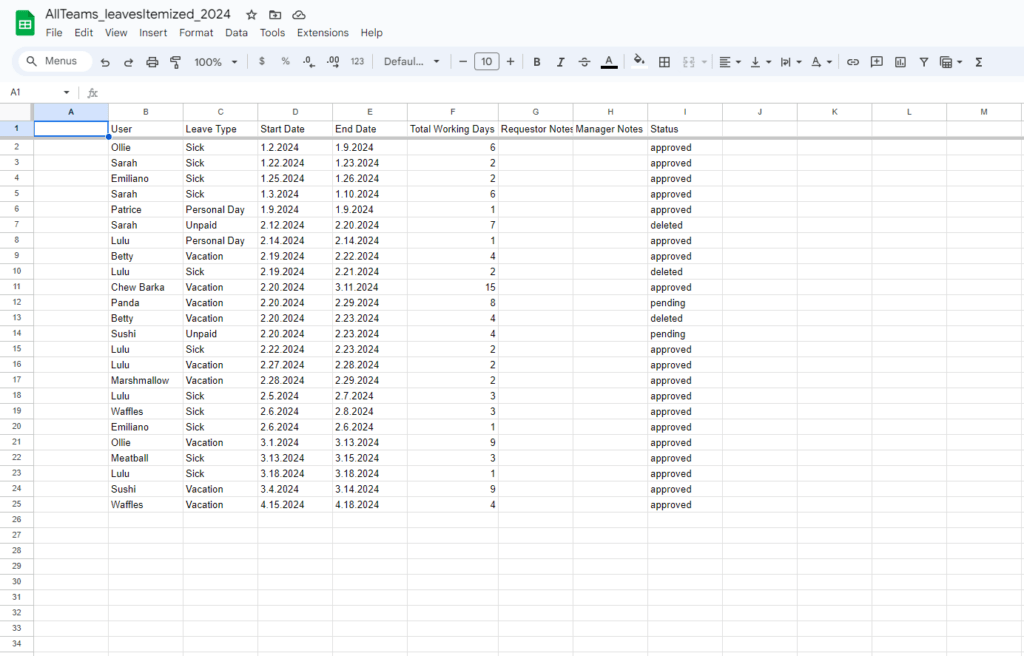
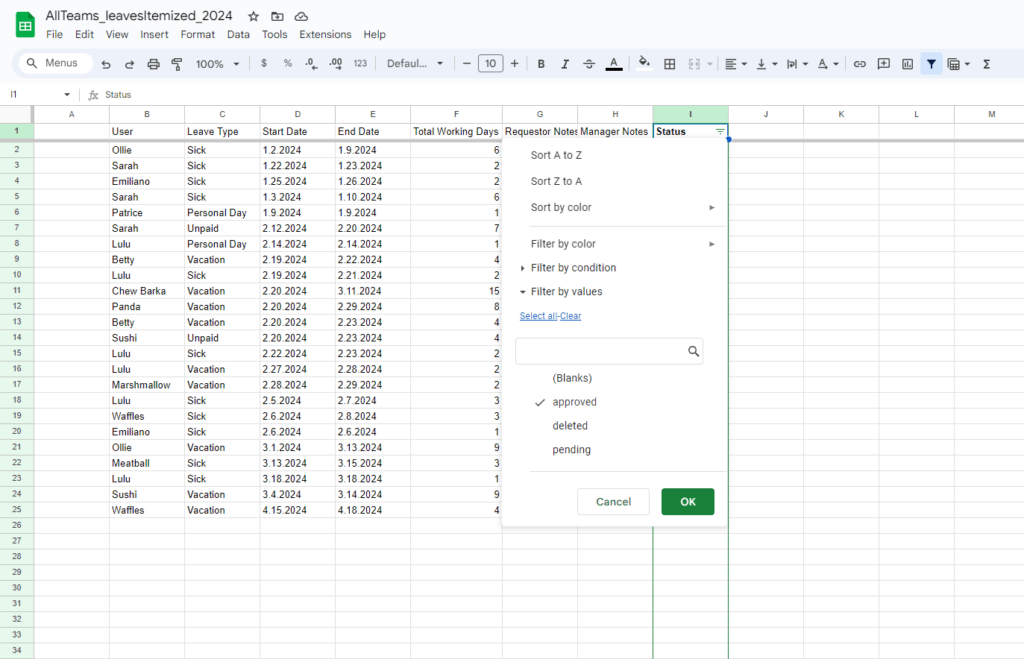
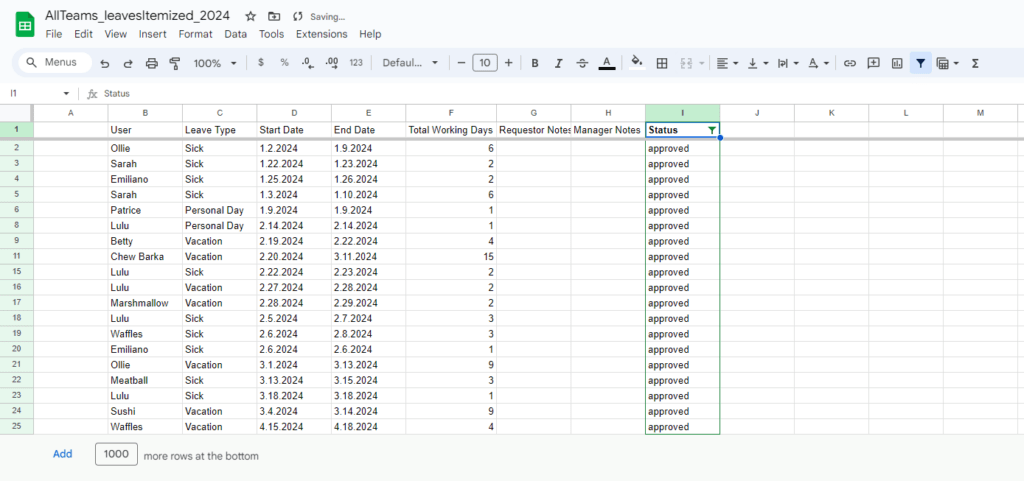
Filter out any leaves that aren’t included in Bradford Factor calculations (such as vacation or parental leave):
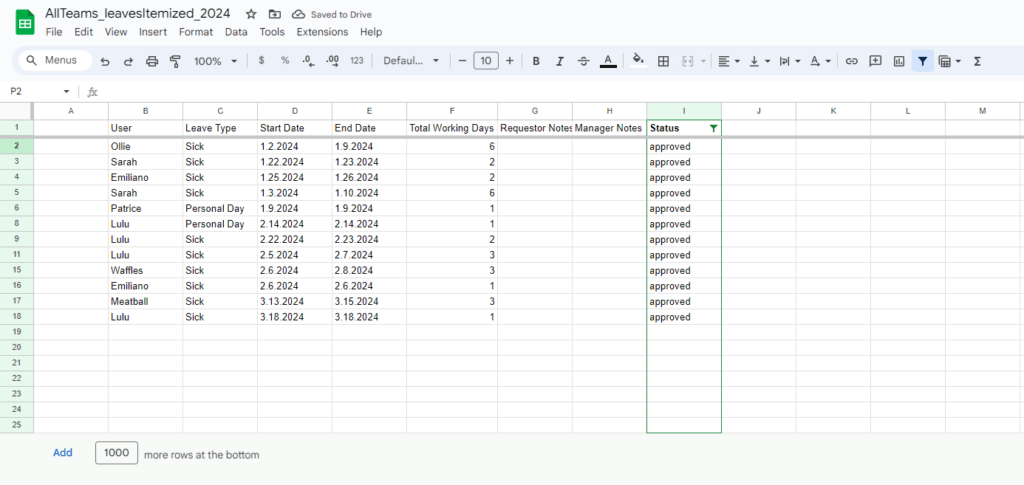
Then sort users alphabetically and add up the total number of absences and total days absent for each.
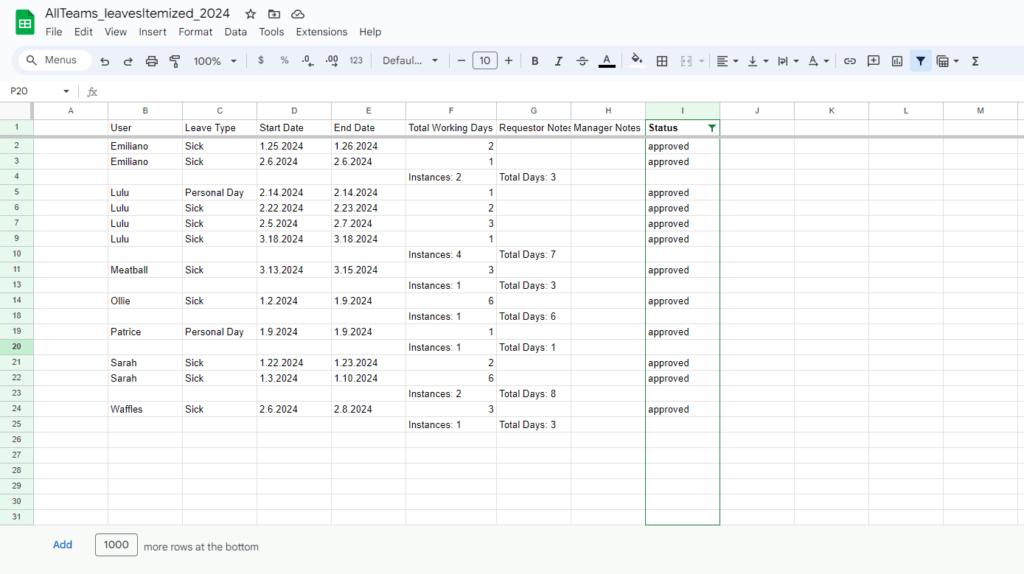
This will give you the data you need to calculate the Bradford Factor score in just a couple of minutes.
What you do with these scores is up to you. We suggest you don’t use this as a hard and fast way to assess the worth of your employees. Instead, if you decide to use the Bradford Factor, use it as a tool alongside other productivity metrics and wider context around employees’ absences, and see if this helps you build a more productive and engaged team.
Click here to try Flamingo for free, or check out a demo of our platform here.
Flamingo makes managing your team’s paid time off a breeze.